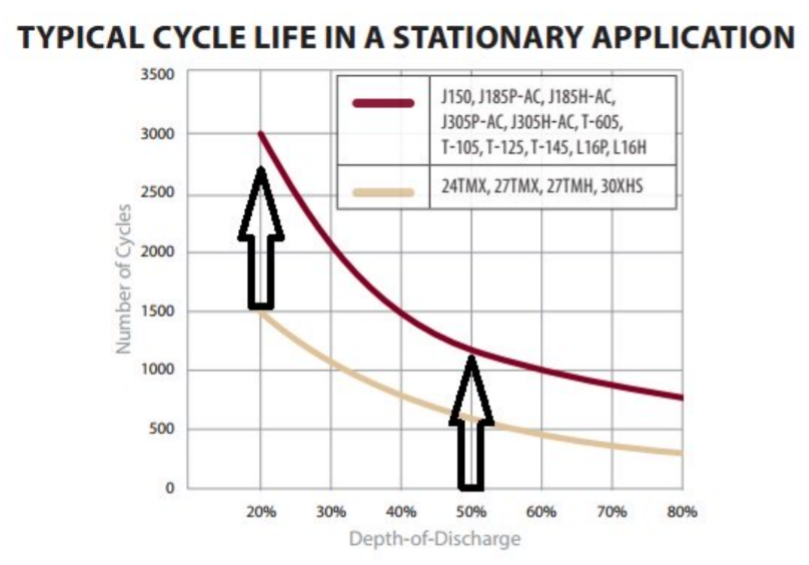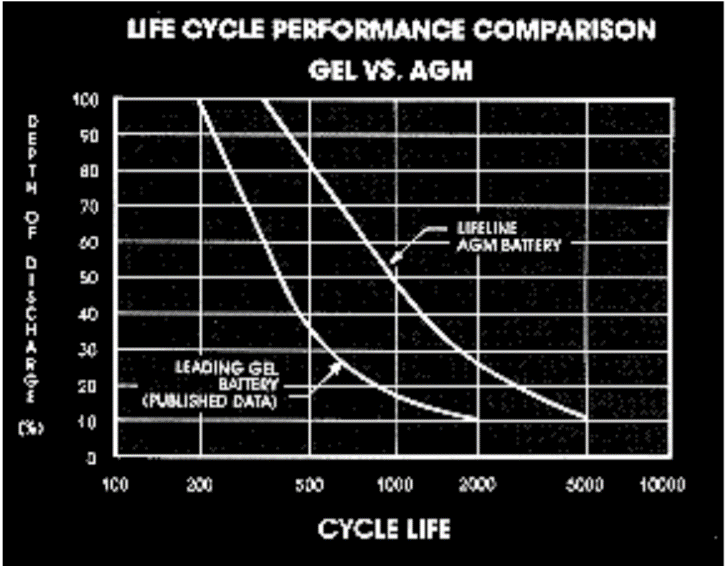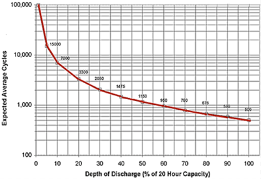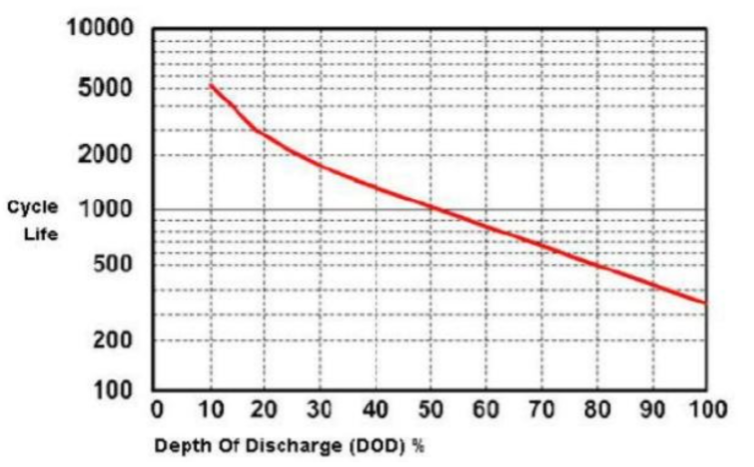Does depth of discharge affect cycle life?
Yes. Work it harder and longer, and it will fail sooner. But remember, if you do not work it at all or you work it too often, then the life cycle will also be reduced. Here are some published cycle life data from a few manufacturers of quality products today.




WARNING – DO NOT EQUALIZE CHARGE GELL OR AGM BATTERIES! Equalizing is an “over voltage-over charge” performed on flooded lead-acid batteries after they have been fully charged to help eliminate acid stratification. It helps to eliminate the acid stratification and sulfation that happens in all flooded lead acid batteries. Acid Stratification is the #1 killer of flooded lead acid batteries.
Laboratory-designed, specific to Discover, “Balance” charge algorithms have been designed and are included in all Discover recommended Industrial Commercial charges offered for sale wherever our Discover AGM and GELL VRLA DRY CELL products are sold. Visually the Balance Charging curve diagram is similar to a flooded equalize charge curve in its finishing voltage. Still, it is strictly controlled to promote proper active material conversion and not to promote gassing or bubbling of the acid to help reduce acid stratification, as in a flooded battery. Discover’s Balance charging algorithms are HIGHLY recommended for batteries being installed in strings, larger batteries using taller plate groups and/or with batteries constantly being subjected to high-rate deep-cycle.
Battery Council International BCIS-04 Rev. Draft Dec02 3.8.2 states that for Flooded batteries, “An equalizing charge is allowed in conjunction with constant voltage charging to promote electrolyte mixing and ensure complete recharge. The equalizing charge must not exceed 3 hours and should be used cautiously to avoid excessive overcharge. For VRLA DRY CELL batteries, no equalizing charge should be used unless specifically recommended by the manufacturer.”
